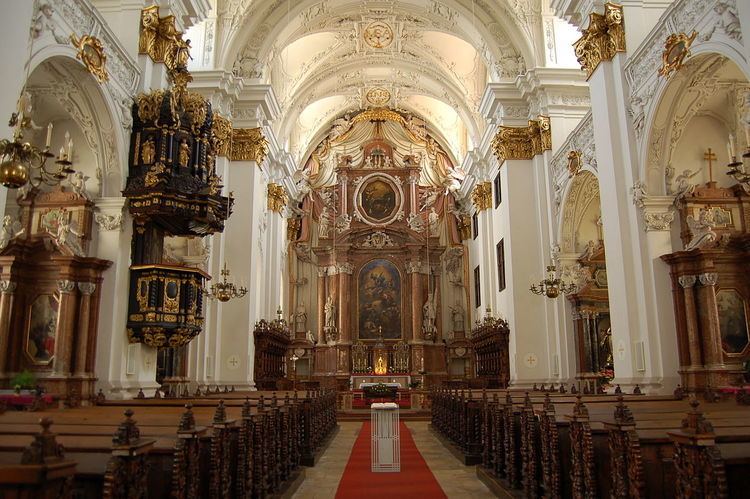Form Responsorium | Catalogue WAB 7 | |
 | ||
Composed 28 April 1885 (1885-04-28): Vienna | ||
Ecce sacerdos magnus (Behold a great priest), WAB 13, is an 1885 sacred motet by the Austrian composer Anton Bruckner. It is a musical setting of the antiphon of the same title.
Contents
History
This setting was composed at the request of Johann Burgstaller, to be performed at the Linz Cathedral on the 100th anniversary of the founding of the diocese. It was completed by 28 April 1885 and sent to Burgstaller in mid-May. However, the work was not performed at that event. The work, which was edited by Viktor Keldorfer (Universal Edition) in 1911, was premiered on 21 November 1921 by the Vöcklabruck women's choral society. The motet is put in Band XXI/33 of the Gesamtausgabe.
Music
The piece of in total 106 bars is a six-part responsorium in A minor for eight-voice mixed choir, three trombones and organ:
- Ecce sacerdos magnus (bars 1-22). As in Bruckner's Te Deum, the work begins with bare fifths.
- Ideo jure jurando (bars 23-39). This second part the work, which is recalling the harmony of the previous Locus iste and Christus factus est WAB 11, is repeated two times as a ritornello on bars 64-80 and 90-106.
- Benedictionem omnium (bars 40-63). As in Mass No. 1 and the Adagio of most of Bruckner's symphonies, this third part contains Bruckner's typical ascending scales.
- Ideo jure jurando (bars 64-80): first repeat of bars 23-39.
- Chorale: Gloria Patri et Filio (bars 81-89). This fifth part, which is sung a cappella in unison, is a transcription of the Gregorian plain chant Gloria Patri with a different metric structure.
- Ideo jure jurando (bars 90-106): second repeat of bars 23-39.
The antiphon, which was intended as processional music for the entrance of the bishop into the cathedral, was thus designed to be "majestic" and "ceremonial" in character. The work's "most enthralling feature" is "the antiphonal writing of Gabrielian grandeur" in bars 64-66. Kinder calls the piece "one of Bruckner's crowning achievements in the small forms" and "a work of almost barbaric intensity".
The trombones, which usually double the low voices, occasionally adopt independent lines. The ritornello on the words "Ideo jurejurando" is expanded and contrasted with episodes "that seem to trace the evolution of church music" in their varied use of texture. In contrast, the harmonic structure is more reflective of Bruckner's own compositional style. The piece includes several references to Bruckner's 1854 Libera me, particularly in the harmonic writing.
Selected discography
Bruckner's Ecce sacerdos magnus was recorded at first in 1966 by Eugen Jochum with the choir of the Bayerischen Rundfunk (LP: DG 139134/5).
A selection of the about 30 recordings:
Note
The most of the performers are singing the Chorale in Gregorian mode. Only a few are singing it in accordance with the score: Fiala, Ortner and Schäfer.
